
Written by: Rachel Chan
Blog link: https://bit.ly/3oDbYQf
What sparked this
A couple of months ago in 2020, I decided to enroll for a UX Design Course with Vertical Institute in August. Over the course of three full Saturdays, we learnt about user research, defining problem statements, creating user personas and producing mid-high fidelity prototypes of our mobile apps.
As part of our capstone project, we were required to do an analysis of a hi-fidelity prototype of a mobile app. Romantic relationships, in particular, how people meet and fall in love, have always fascinated me. With this in mind, I decided to work on a hi-fidelity prototype of a dating app.
Challenge
Singles in Singapore struggle to find love, defined as long-term relationships, even with the current pool of dating apps out there. A common pain point they face is people they meet online are only interested in casual relationships.
The goal was to create a dating app which focuses on connecting singles seeking serious relationships with potential matches who share the same motivation as them.
Current Local Dating Scene
Here are some findings from an *online survey by the National Population and Talent Division (NPTD) in 2019:
- 7 in 10 said that they needed more opportunities to meet new people
- Top three methods that respondents have used to find their potential partners are:
a)Social activities
b)Dating apps/websites
c)Asked family and friends to introduce
User Research
The objectives of conducting user research were to understand the dating woes of singles in Singapore and determine if there was a need to create a dating app to solve this problem.
I conducted interviews with 10 single friends who have been using dating apps for the past few years and are seeking serious relationships.
The purpose of the interviews was to get their thoughts on the current pool of dating apps (what they like and dislike about them), qualities/traits they are looking for in their soul mate and challenges they face when searching for the right one.
Based on their responses, I recorded them as user stories in Trello and grouped them under relevant categories.

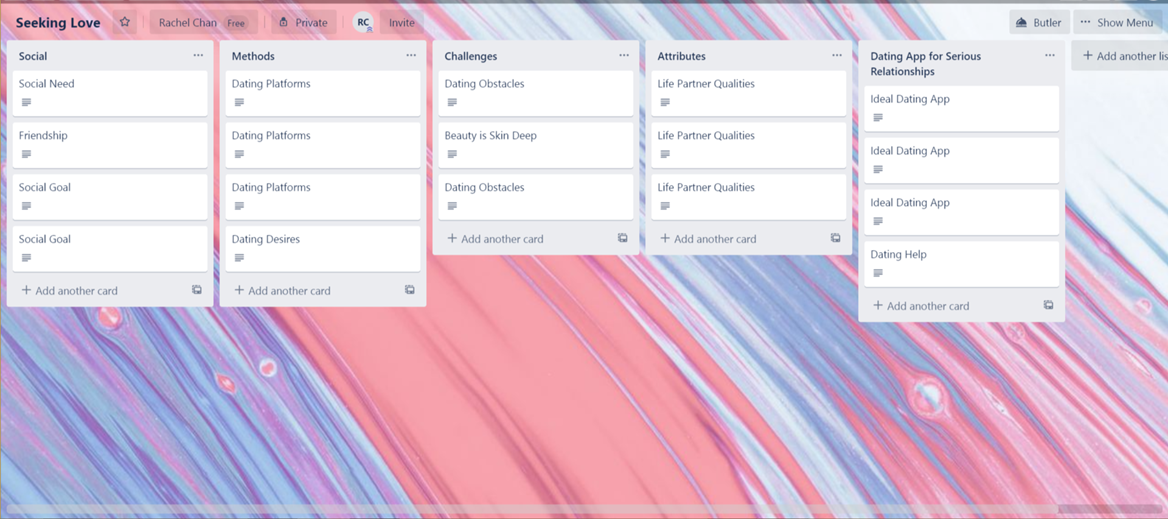
Interview Insights
Here are my insights from the conversations I had with my friends:
- Wide pool of dating apps out there yet there doesn’t seem to be an app which only caters to singles seeking serious relationships.
- There should be a bigger variety of matches on dating apps to prevent the same match from popping up twice on a person’s screen.
- For some singles who are averse to awkward first dates, they have shared that they are open to going on double or group dates.
Hello Koalaty Dates, Goodbye Hookups
This encouraged me to think about how we can provide opportunities for singles to meet more qualified matches through a user-friendly dating apps.
It inspired me to come up with a dating app prototype which is only targeted at singles seeking long-term relationships. To help bring them a step closer to achieving this goal, singles could either choose to pursue single or group dates.
I named the dating app Koalaty Dates to get the message across that this platform was intended to enable singles to make meaningful connections. Pun aside, I used koalas because they are typically known to stir warm, fuzzy feelings in people (which is similar to how one feels when they fall in love I reckon!).
User Personas
My next step was to come up with user personas based on probable traits of Koalaty Dates users.
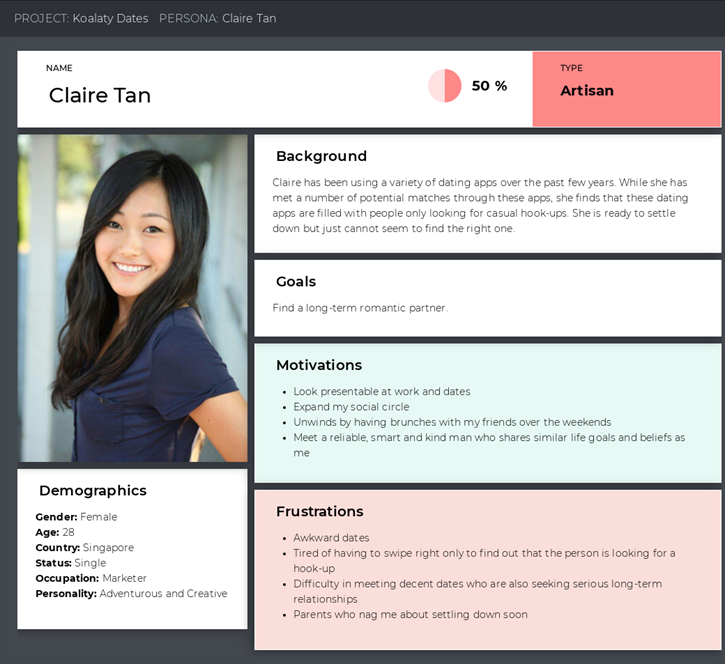
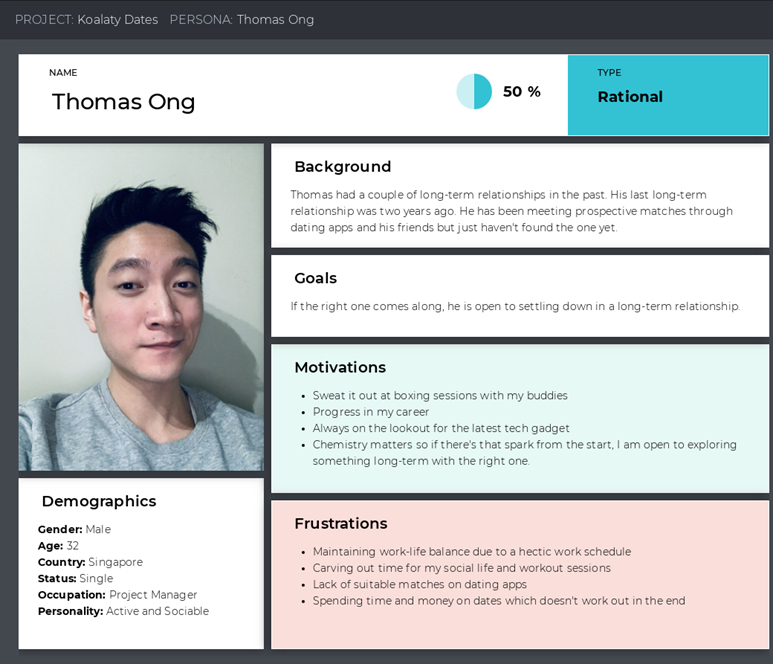
High-Fidelity Prototypes
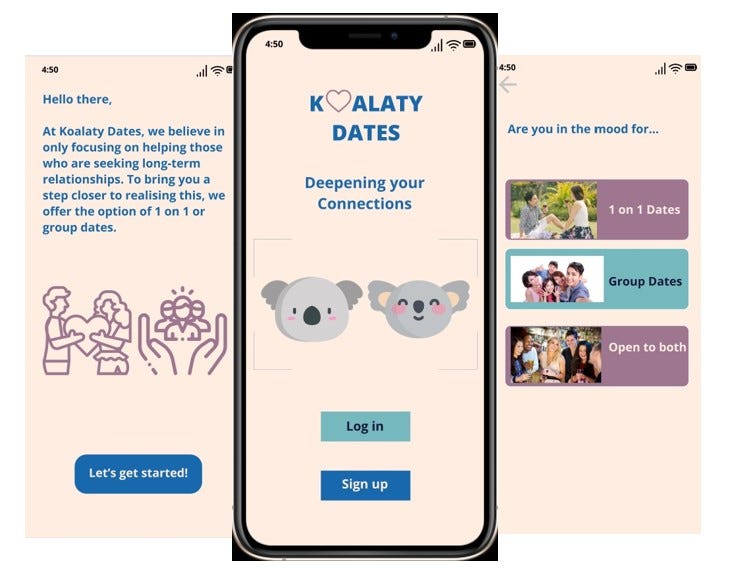
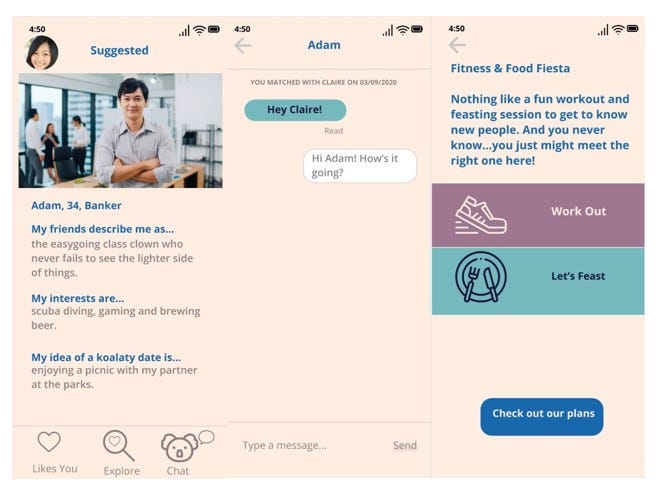
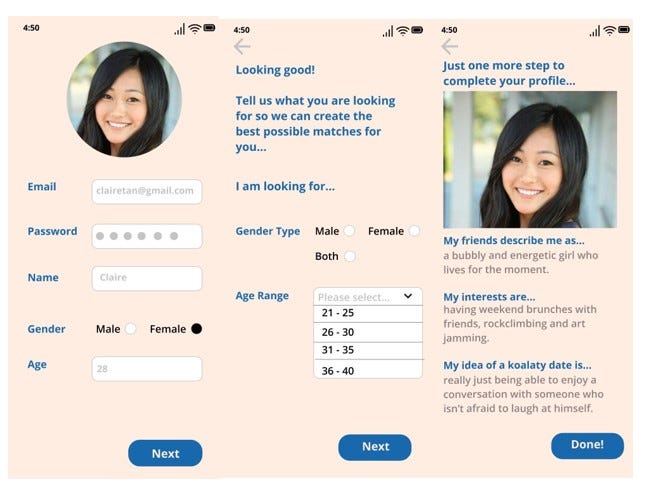
Usability Testing
I did a round of usability testing to test how user-friendly the app was and whether it allowed users to complete their goal/s in an effective and efficient manner.
At the same time, I also sought feedback on the appearance and design of the app. Based on the feedback provided, this gave me an opportunity to assess what other features could be included to improve the app and enhance the user experience.
Here’s the feedback I got from users:
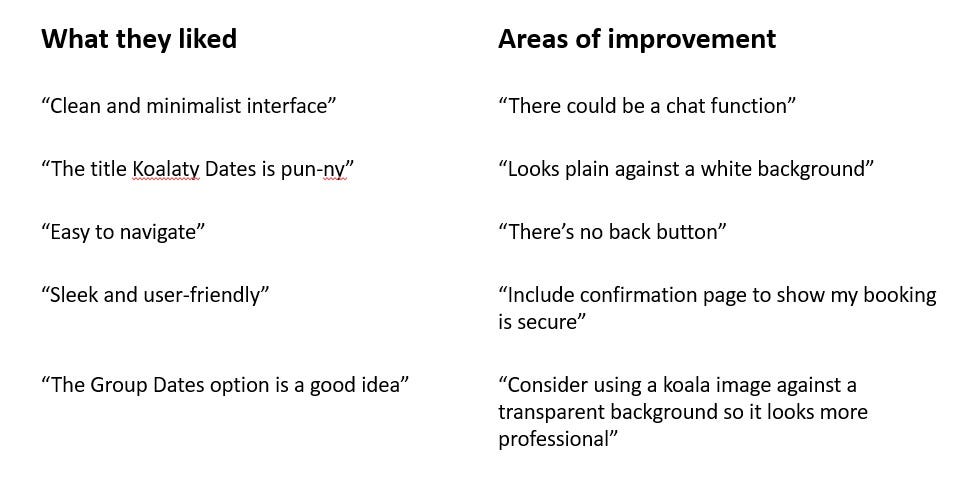
Personal Reflections
- As UX Design is an iterative process, I have learnt there are multiple phases involved in launching a mobile app and how adopting the MVP approach can provide sufficient customer value to attract early-adopter customers.
- It helps to focus on getting feedback from users to understand the problem before trying to provide solutions and produce multiple designs.
- It has sparked my interest in UX design because I have always been curious about existing social problems and how we can solve them.
About Vertical Institute
Vertical Institute prepares individuals for the jobs of tomorrow. We specialize in teaching in-demand skills, building the next generation of changemakers and inventors through our world-class tech courses and certifications.
Singaporeans and PRs can receive up to 70% IBF Subsidy off their course fees with Vertical Institute. The remaining fees can be claimable with SkillsFuture Credits or NTUC UTAP Funding.


